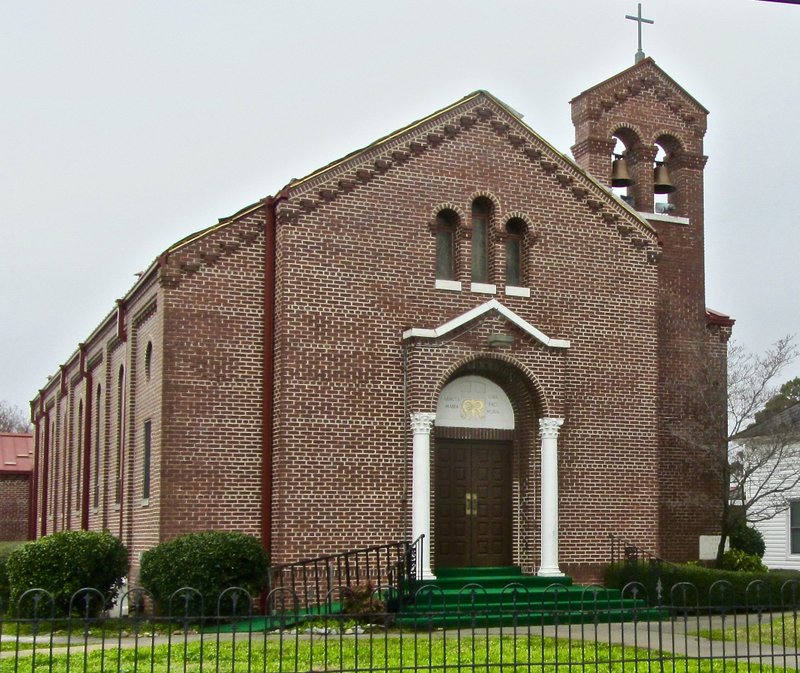LAKE VILLAGE -- A historical marker on the lawn of Our Lady of the Lake Church along oxbow Lake Chicot's shoreline sums up a melancholy episode from the end of the 19th century:
"In 1895, Austin Corbin, a New York banker and land developer, working with immigration officials, brought 100 families from north central Italy to grow cotton at Sunnyside, a plantation located between the Mississippi River and Lake Chicot.
"These Italians struggled against exploitation, prejudice and language barriers, and many died of malaria and other lowland diseases. Many of their descendants are now among the leading citizens of Arkansas and the nation."
The story of those sometimes forlorn immigrants, many of whom left the Arkansas Delta after a few years to establish Tontitown in the state's northwest corner, is told in affectionate detail at Our Lady of the Lake Church Museum.
Little known beyond Chicot County, the museum next to the church is the creation of longtime member Elizabeth Borgognoni. Along with its account of the ill-starred Sunnyside immigrants, it relates a good deal more fascinating parish history dating to the founding in 1866.
The museum's cornucopia of photographs and other memorabilia evokes the ongoing Italian heritage, including the yearly Homemade Spaghetti Dinner. One newspaper clipping is headlined: "They're making pasta!" A photograph, captioned "Johnny's Party Pig -- All Dressed Up," shows the grinning chef and his roast suckling pig with apple in mouth.
Alongside all the festive images, the misfortune of the Sunnyside immigrants marks merely one chapter of the history -- although a prominent one -- in the lengthy annals of a church that still honors its ethnic roots.
A key part of the story involves the Rev. Pietro Bandini, a priest who went to Sunnyside with the second group of Italians in early 1897. Dismayed by conditions here, he migrated a couple of years later to Northwest Arkansas with about 35 families. Others moved elsewhere in the state, back to Italy, even to South America. But some stayed on, part of the Italian-focused narrative at Our Lady of the Lake Church Museum.
Museum displays speak to the hope and disappointment of the Italians who arrived in the last years of the 19th century. One layout displays contract letters signed by the migrants in their homeland. Another, titled "The Long Road to the Promised Land," shows the rigors of their overseas travel. A third gives the landlord's final tabulation of the first cotton crop.
As a footnote to the parish history, a photograph shows St. John's Colored Catholic Church, established in 1943 and closed in 1963 after mandated racial segregation in the South was abolished.
Along a road northeast of Lake Village, scattered tombstones carry names of Roman Catholic churchgoers like Celesta Malatesta, who died in 1898 at age 33. A sign marks the site as Hyner Cemetery, established in 1896. The posting speaks to the mixed fortunes of the immigrants who worshipped at Our Lady of the Lake:
Buried here are some "of those devout, courageous Italian immigrants who came to America in 1895, settling and working at Sunnyside Plantation and throughout the Delta area. They established schools, churches and entered into the life of our communities realizing the American dream of freedom, opportunity and the pursuit of happiness. This was at the cost of great sacrifice. ... Descendants of those noble immigrants still farm this land."
Our Lady of the Lake Church Museum, 314 S. Lakeshore Drive, Lake Village, can be visited most days by calling ahead to (870) 265-5439. Admission is free; donations are welcome.
Weekend on 03/14/2019
